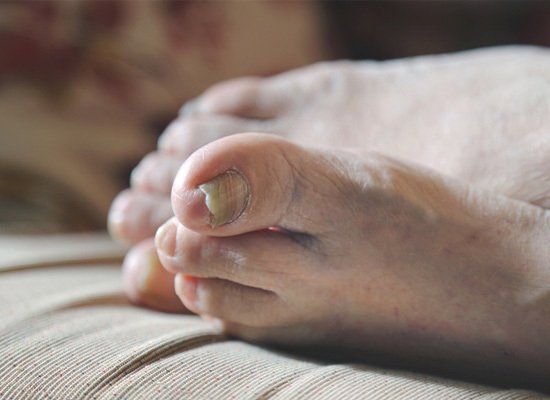05 Feb, 2016
Causes, symptoms, treatment
Our feet are incredibly important. We use them to get around and, when any painful condition strikes, our movement is hindered. Unfortunately many people neglect the health of their feet and can succumb to painful feet conditions. One of these are ingrown nails.
Ingrown Nails – what are they?
Ingrown toenails are caused by increasing pressure of an in-growth of the nail’s edge onto the skin of the toe. The breakage of the nail through the skin produces inflammation and causes discomfort. This discomfort is mild initially; however it can quickly become extremely painful as the inflammation progresses into an infection. Many people suffer from ingrown nails on a regular basis, as it becomes a recurring problem.
C ommon Causes
There are multiple causes of ingrown nails including the simple fact that one is trimming their nails improperly. Athletes and sports enthusiasts are particularly prone to ingrown nails as they use their feet heavily whilst participating in sporting activities. Another common reason is that many of us are wearing improper/uncomfortable footwear that can cause disru ption to our foot structure and can press uncomfortably on the toenails, therefore increasing the likelihood of ingrown nails.
Tight footwear, tights/stockings and socks can also push your toe flesh onto the nail so that it pierces the skin. Also, if you sweat excessively or don’t rotate your footwear, this makes the skin moist and weak so that it is easily penetrated by the nail.
If you have brittle nails with sharp edges or are in the habit of breaking off bits of nail that are sticking out, you are also more likely to get an ingrown toenail.
Poor foot hygiene can introduce unwanted bacteria into your feet that can initiate infections or agitate mild infections into more severe inflammation. When our feet sweat, it creates the perfect moist environment for bacterial growth. In addition to this, many people suffer from foot deformities such as abnormally long toes or congenital toe deformities.
Symptoms to look out for
Ingrown toenails have various telltale signs include redness and pain and swelling around the site. If the infection has progressed then you may also observe discharge such as yellow pus. Symptoms also vary from person to person as the infection may cause a range of other symptoms. Often the signs are very limited, and one may only feel slight tenderness at the nail border when pressure is applied. Mild infections may clear up without treatment; however if the infection is recurring or has progressed into severe infection, then it is important to go and visit a qualified podiatrist.
Treatment
Visit a podiatrist if you experience any:
- Persistent pain in your toe from the ingrown nails
- Symptoms of infection, especially if you have Diabetes or a poor immune system
- Conditions that affect the nerves and/or feeling in your foot.
For those particularly prone to ingrown toenails from underlying problems such as poor gait, partial nail avulsion (PNA) may be recommended along with finding a more permanent solution to the underlying condition. This procedure is done under a local anaesthetic where 8-10% of the nail is removed (including the root) so that the nail permanently becomes slightly narrower. The chemical phenol cauterises the nail and prevents it re-growing in the corners. This is over 95% successful. You will, however, have to go back to your podiatrist for a number of re-dressings.
If you experience ingrown toenails that do not resolve themselves naturally or through routine foot care within three weeks, it is recommended to seek the help of your GP to prescribe antibiotics. But if you need urgent attention, you should contact a private podiatrist such as Betafeet Podiatry.
For more information visit:
http://www.scpod.org/foot-health/common-foot-problems/ingrowing-toenail/
.






